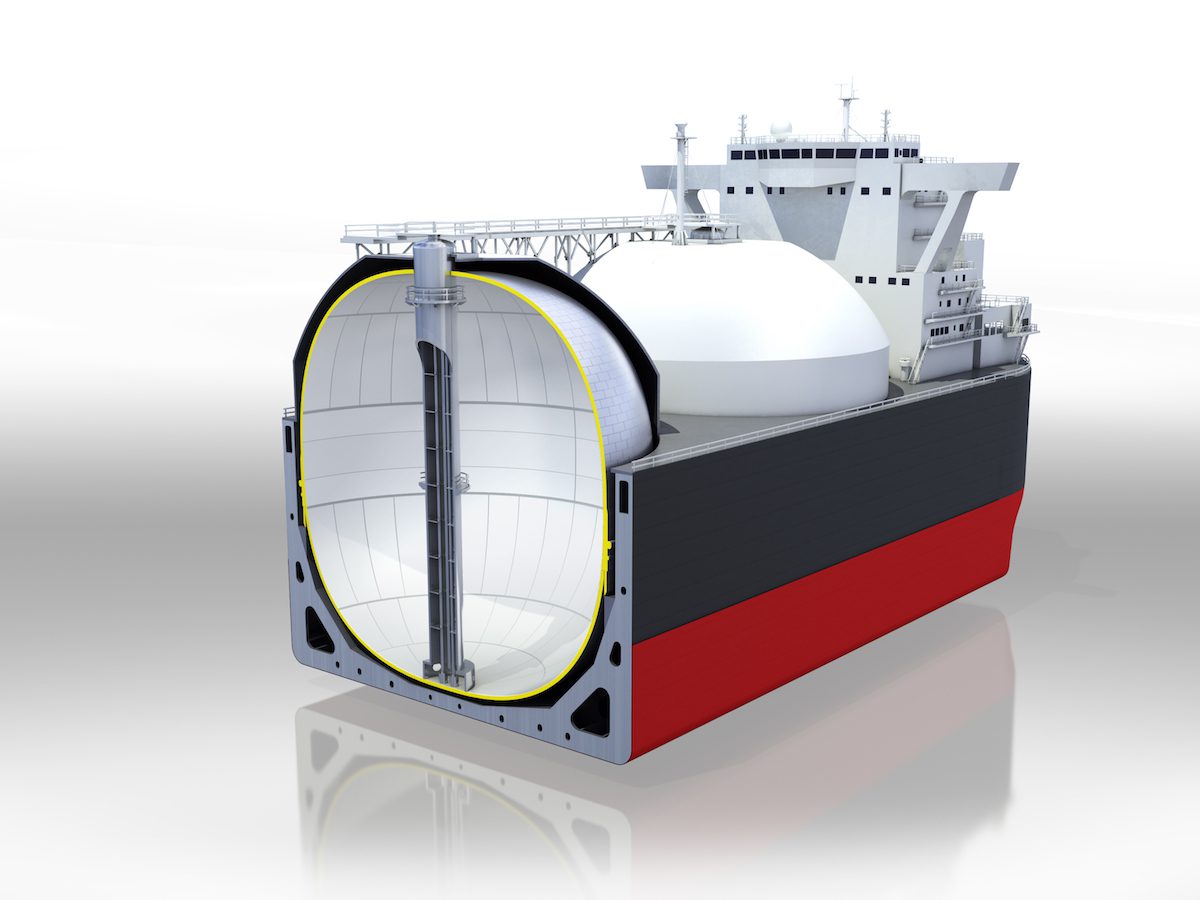Second Gaza Relief Aid Ship Leaves Port
By Yiannis Kourtoglou (Reuters) – Ships carrying 332 tons of food for Gaza left Cyprus’s Larnaca port on Saturday in a convoy which will reach the besieged enclave early next week, authorities said. It...


KHI’s new non-spherical (MOSS) illustration. Image: DNV GL
Internatinoal classification society DNV GL has awarded Kawasaki Heavy Industries of Japan an Approval in Principle (AiP) for a newly developed non-spherical (MOSS) tank designed for use in liquified natural gas carriers using the Expanded Panama Canal.
The new tank is an IMO Independent Type B LNG tank developed for use in 180,000 cubic meter LNG carriers.
KHI says that the non-spherical tank has the same reliability as a spherical (MOSS) tank, but has an increased cargo capacity of 15 percent. It can also be used with the “Kawasaki Panel System”, an advanced heat insulation system developed by KHI. DNV GL carried out comprehensive sloshing and buckling analyses together with KHI, which demonstrated that the new tank provided an equivalent level of safety performance to the well-known spherical (MOSS) tank with no filling restrictions.
The Panama Canal opened to the LNG segment for the first time in its history with the inauguration of the Expanded Panama Canal in June 2016.
“As DNV GL’s experience with LNG has grown over the years, so too has our conviction that LNG can make a significant and positive contribution to the efficiency and sustainability of the energy and maritime industries,” said Johan Petter Tutturen, Business Director for Gas Carriers at DNV GL – Maritime. “To keep this momentum for the use of LNG growing, DNV GL will continue to work with innovative partners like KHI to ensure that owners and yards can be confident that this technology will continue to advance, while meeting strict safety and reliability standards,” he concluded.
An Approval in Principle is an independent assessment of a concept within an agreed framework, confirming that the design is feasible and no significant obstacles exist to prevent the concept from being realized. The AiP is typically carried out at an early stage of a project to confirm its feasibility for the project team itself, company management, external investors or regulators.
Join the gCaptain Club for curated content, insider opinions, and vibrant community discussions.


Join the 105,382 members that receive our newsletter.
Have a news tip? Let us know.
Access exclusive insights, engage in vibrant discussions, and gain perspectives from our CEO.
Sign Up




Maritime and offshore news trusted by our 105,382 members delivered daily straight to your inbox.



Essential news coupled with the finest maritime content sourced from across the globe.
Sign Up